Green Hylands: supporting biodiversity through grass meadows and haymaking
The Parks team at Hylands Estate has been busy making hay from the estate’s grass meadows in recent weeks. It follows Hylands receiving a Gold “Green Tourism” Accreditation earlier this year following efforts to improve environmental sustainability and support biodiversity across the estate.
Grass meadows beneficial to ecosystem
Around 70 hectares of grassland in Hylands Park is currently managed using a haymaking and meadow regime, along with a further 27 hectares of council-owned grassland across Chelmsford. Such regimes involve adapting areas of established grassland into ‘spring meadows’ which are later harvested into a hay crop.
Meadows and haymaking schemes are hugely beneficial for ecosystems and help improve the diversity of wildflower, insect and animal species. The uncut grasslands provide a great source of food, nesting and shelter for insects, birds – particularly ground-nesting species such as Skylarks – bats and small mammals such as field and dormice.

As the meadows develop, they also increase the health of the soil, making it more carbon rich and therefore a better environment for wildflowers, including rare breeds such as Ox-eye Daisies and Yarrow. This in turn supports more pollinating insects like bees, including Hylands Estate’s own resident honeybees.
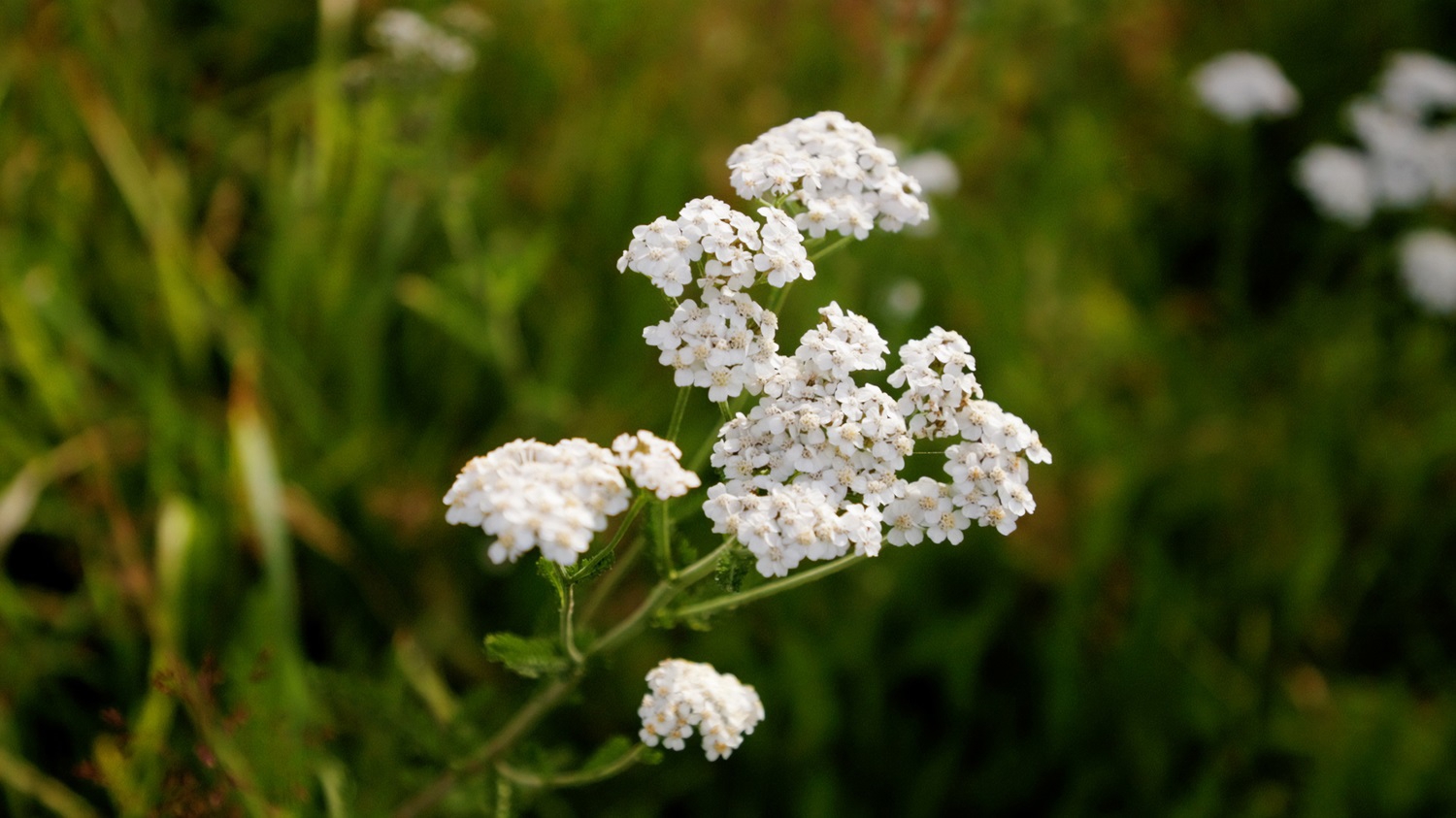
Making hay when the sun shines
In June or July, Chelmsford City Council’s Parks team harvest a hay crop from Hylands’ established meadows. It takes about a week per area or compartment and requires dry warm weather.
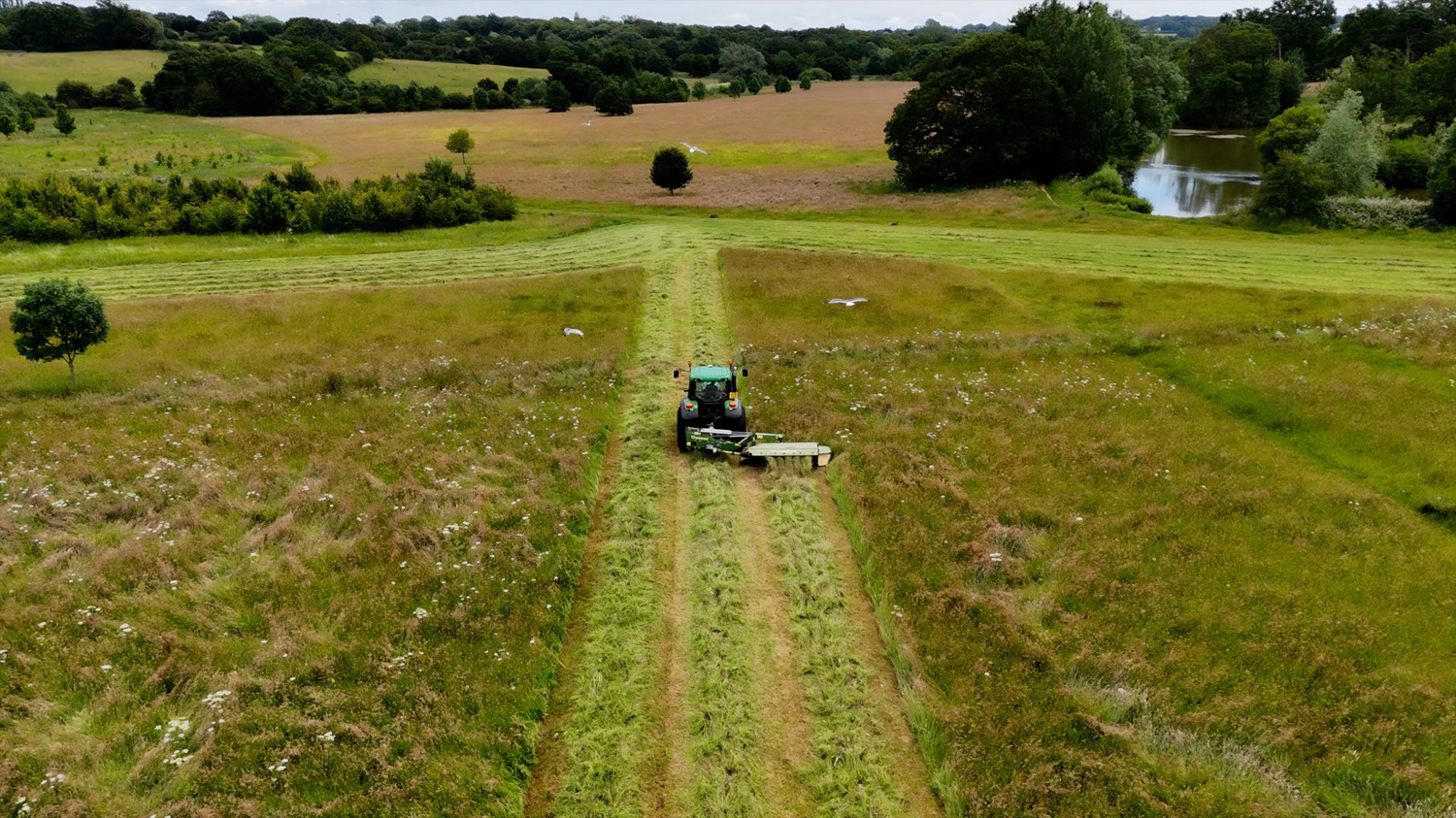
Decisions to commence with haymaking are largely based on weather forecast and the moisture content of the grass. If the conditions suddenly change and the weather becomes less favourable, the hay grass can easily be ruined by becoming wet – hence the well-known expression “make hay while the sun shines”!
The process involves first cutting the grass and turning it into rows or ‘windrows’, a practice which is only suitable for larger areas that can be accessed by tractor-mounted machinery. Once cut, the hay sits and dries out further in preparation for baling. This also gives insects and other wildlife the chance to drop off the cut grass and find new homes.
After about three days, the team then bale the hay. Large bales are transported off site for sale as organic hay, while the smaller bales are kept on-site at Hylands and used as winter feed for the estate’s horses, Hawthorn Heavy Horses.
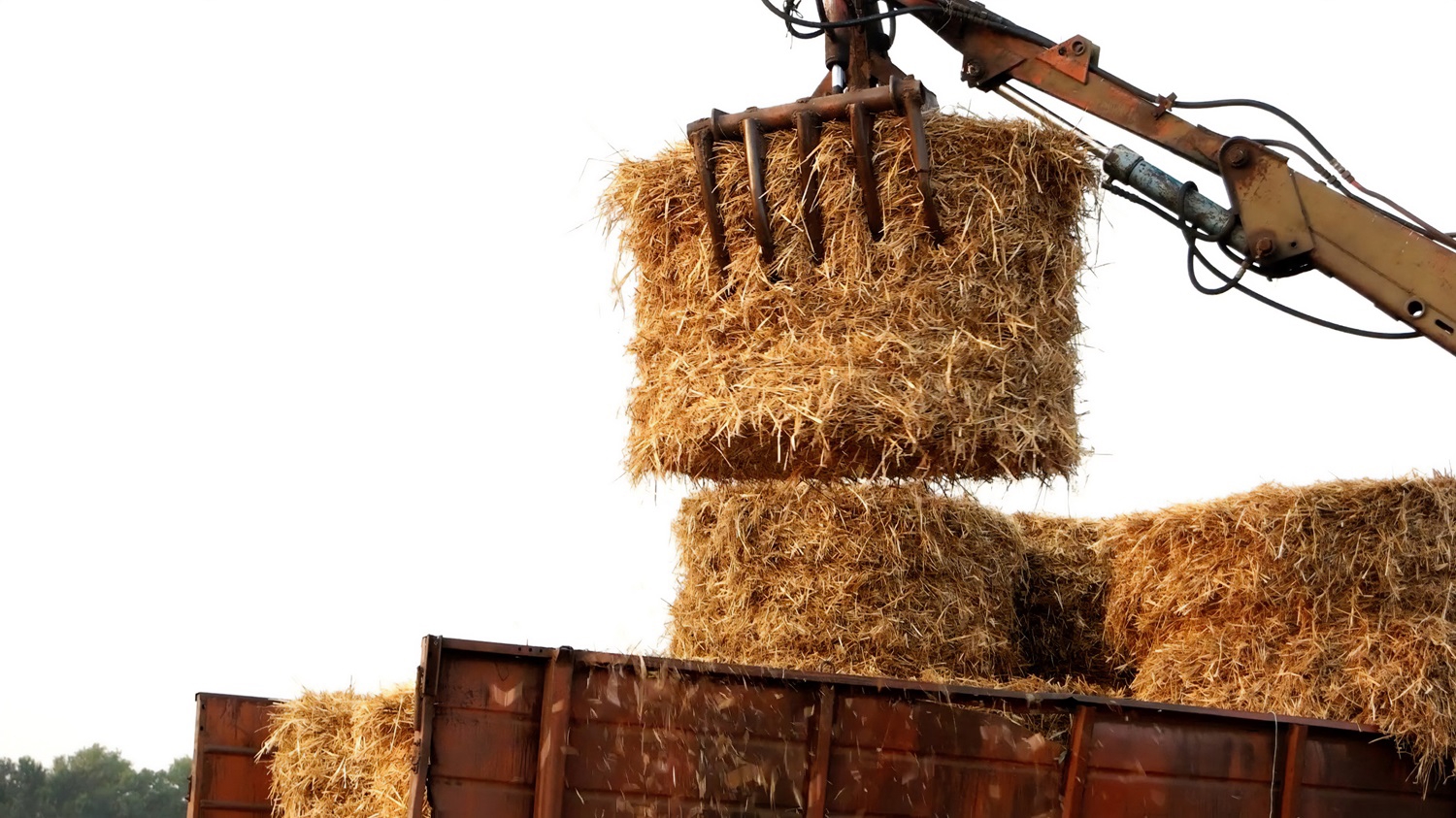
These working horses have lived at Hylands since 2008 and help the Parks team to manage the estate in an environmentally sensitive way. They specialise in woodland management, including sustainable coppicing and timber extraction.
Claudia, who manages Hawthorn Heavy Horses alongside husband Matt, says the horses love the taste of Hylands hay:
““Before the grass is cut the horses enjoy a little grazing in the meadow here over the summer months, and then we use the hay crop as a feed for the winter months when there’s less grazing pasture available for them. They absolutely love the taste of it, and it’s amazing to know that they’re benefitting from the land that they themselves help to maintain and conserve.”
Claudia, Hawthorn Heavy Horses
Livestock grazing to maintain grassland
In 2016 livestock grazing was also introduced to 6.5 hectares of Hylands’ meadows sites, mostly alongside the River Wid, to further improve grassland management.
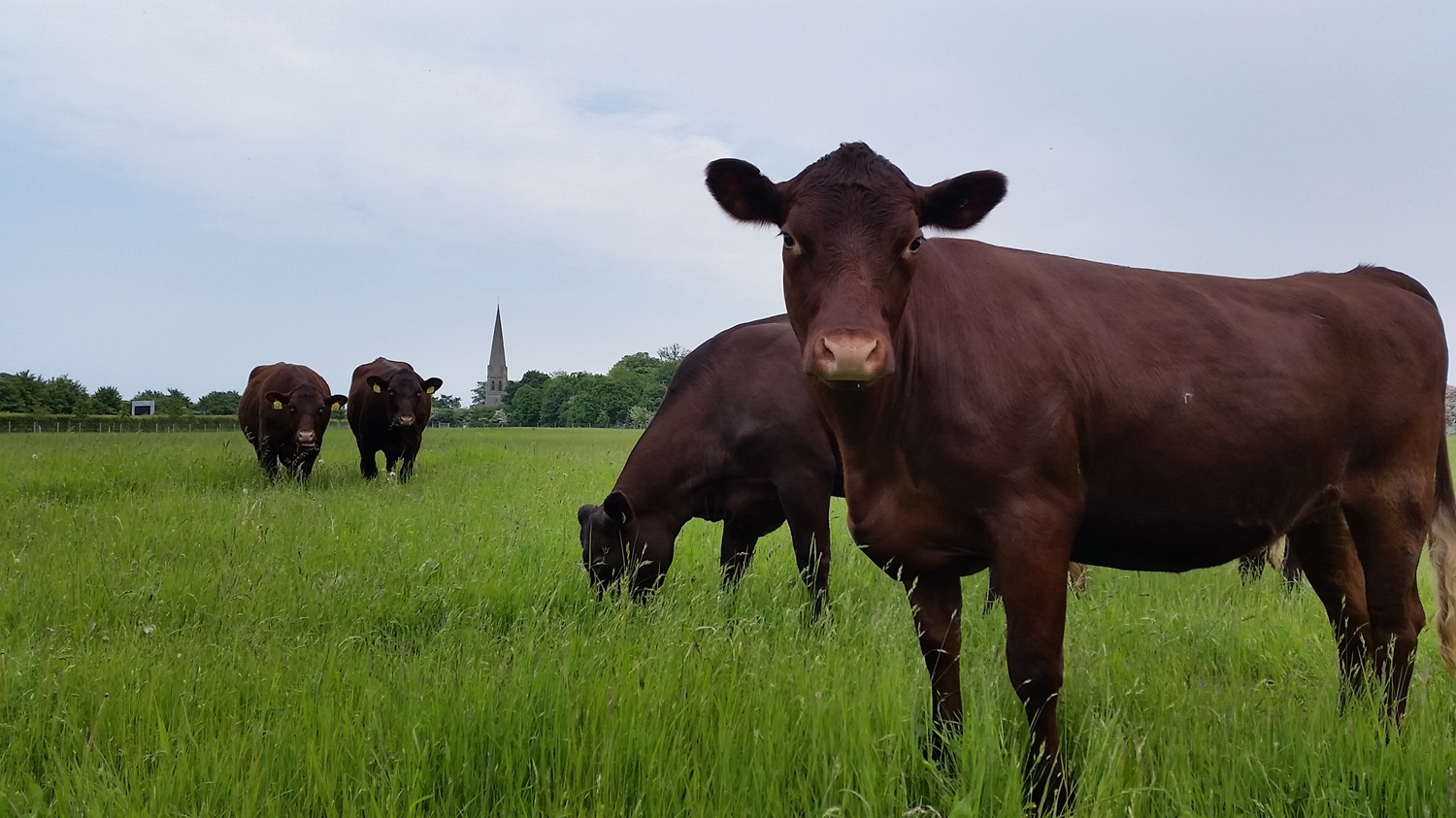
This practice sees Red Poll cattle, provided by Legacy Grazing through the government’s Countryside Stewardship scheme, feed off Hylands’ longer, more vigorous grasses. By eliminating these grasses, the rarer, less productive grasses and wildflowers are given more space to thrive.
Their heavy hooves also trample down ground around the meadow, breaking down undesirable bracken and other woody species that can lessen the quality of grassland meadows, whilst also providing the perfect environment for invertebrates and reptiles.
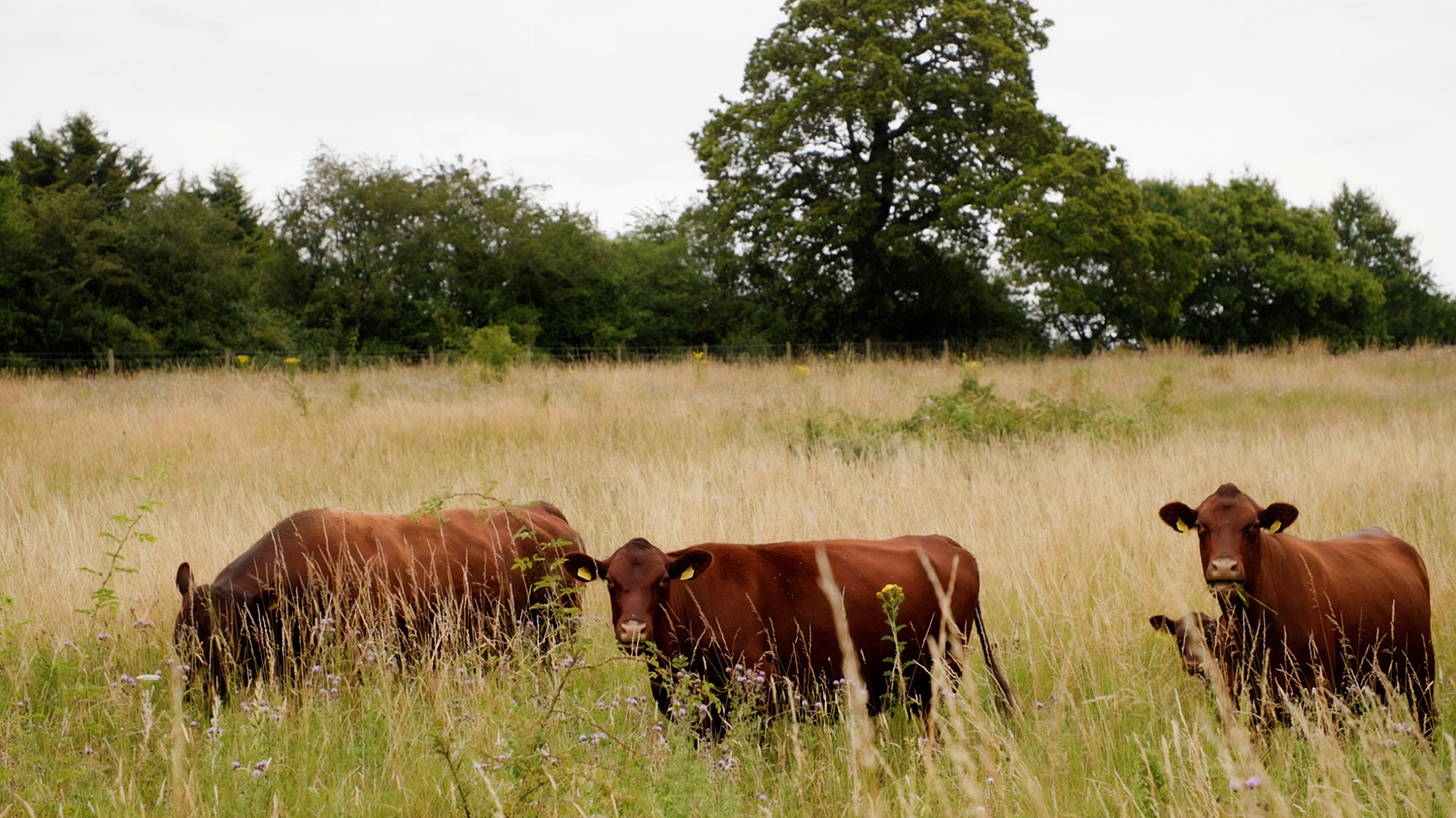
The cattle themselves also benefit from the tasty grassland, with research suggesting that species-rich wildflower meadows provide more nutrition to livestock than standard pastures or cattle feed.
The scheme marks a return to traditional grassland management techniques which would have been historically practiced at Hylands.
Councillor Rose Moore, Cabinet Member for a Greener Chelmsford says the grass meadows at Hylands make a real difference to the ecology of the park:
““It is a joy to see this wonderful cycle of activities contributing to the restoration of a healthy ecosystem; from the tall grasses providing species-rich habitat to Red Poll cattle and bees helping rare wildflowers to thrive, and the heavy horses enjoying their hay feed after working hard to maintain other parts of the estate.
Cllr Rose Moore, Cabinet Member for a Greener Chelmsford
“The grass meadows play a crucial role in supporting the outstanding biodiversity we are seeing at Hylands. They support species that are in decline and would otherwise be struggling to find suitable habitats and food sources. And we have scientific evidence that these established grasslands are making a positive difference, with surveys carried out by the Parks team confirming their value as ‘local wildlife sites’. Over time, the character and composition of these grasslands will continue to adapt and further improve biodiversity, as rarer species find vital food sources and habitats at Hylands.
“And, as an added benefit, these meadows are a spectacular sight for visitors to the estate, with many exquisite wildflowers to be spotted – including rarer varieties that we haven’t seen before!”
Uncut grass provides long-lasting shelter for creatures
To ensure continued habitats for species, not all parts of Hylands meadows are used as hay crop. Some areas are left uncut for longer so that pollinators and small mammals can continue to benefit from the long grass and wildflowers. This also allows the wildflowers to flourish for longer and to naturally set seed at the end of the growing season.
Once the wildflowers have gone to seed, the Parks team then cut further areas of grassland, but retain small strips of taller grass so that species dependent on such habitats can continue to thrive.
Green Tourism Accreditation recognises sustainable activities across Hylands Estate
Hylands’ eco-friendly meadows and grassland management is just one of many reasons the estate received Gold status in the Green Tourism Accreditation Scheme.

The estate’s historic landscape and bountiful wildlife is protected by the city council’s Parks team, as well as a dedicated team of volunteers, through a park management programme that aims to look after the 574 acres of land in the most natural and environmentally friendly way possible.
It’s part of Chelmsford City Council’s overall approach to managing green spaces in a way that regenerates diminished species and gives nature space to thrive.
You can find out more about how biodiversity and conservation is managed at Hylands Estate at https://hylandsestate.co.uk/explore/gardens-and-parklands/biodiversity/.
